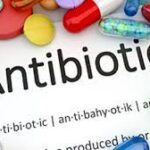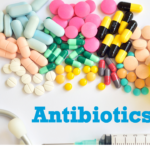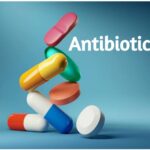How To Reverse The Side Effects Of Antibiotics

What are antibiotics?
Antibiotics are powerful medicines that fight bacterial infections in people and animals. They work by killing the bacteria or by making it hard for the bacteria to grow and multiply.
Antibiotics can be taken in different ways:
• Orally (by mouth). This could be pills, capsules, or liquids.
• Topically. This might be a cream, spray, or ointment that you put on your skin. It could also be eye ointment, eye drops, or ear drops.
• Through an injection or intravenously (IV). This is usually for more serious infections.
Antibiotics only treat certain bacterial infections, such as strep throat, urinary tract infections, and E. coli. You may not need to take antibiotics for some bacterial infections. For example, you might not need them for many sinus infections or some ear infections. Taking antibiotics when they’re not needed won’t help you, and they can have side effects. Your health care provider can decide the best treatment for you when you’re sick. However, antibiotics do not cure everything, and unnecessary antibiotics can even be harmful.
What are side effects?
The National Cancer Institute (NCI) defines an adverse effect as “an unexpected medical problem that happens during treatment with a drug or other therapy.” Unwanted effects can result from a physician’s advice and from medications or treatments, including complementary and alternative therapies. They can lead to complications.
Reports from clinical trials describe adverse events (AEs) and serious adverse events (SAEs). SAEs include death, birth defects, complications that require hospitalization, or permanent damage as a result side effects remain one of the major things a patient looks out for in a medication.
Antibiotics are among the most frequently used pharmaceuticals in both the inpatient and outpatient settings. While these antimicrobial agents are generally well tolerated, these drugs are not without their associated side effects, both dose-dependent and idiosyncratic in nature.
The most common side effects of antibiotics affect the digestive system. These happen in around 1 in 10 people.
Side effects of antibiotics that affect the digestive system include:
- Abdominal pain
- Bloating and indigestion
- Diarrhea
- Loss of appetite
- Nausea (feeling like you may vomit)
- Vomiting
These side effects are usually mild and should pass once you finish your course of treatment.
If you get any additional side effects, contact the doctor in charge of your care for advice.
Antibiotic allergic reactions
Around 1 in 15 people have an allergic reaction to antibiotics, especially penicillin and cephalosporins. In most cases, the allergic reaction is mild to moderate and can take the form of:
• a raised, itchy skin rash (urticaria, or hives)
• coughing
• wheezing
• tightness of the throat, which can cause breathing difficulties
These mild to moderate allergic reactions can usually be successfully treated by taking antihistamines.
In rare cases, an antibiotic can cause a severe and potentially life-threatening allergic reaction known as anaphylaxis.
Initial symptoms of anaphylaxis are often the same as a mild allergic reaction. They include:
• feeling lightheaded or faint
• breathing difficulties – such as fast, shallow breathing
• wheezing
• a fast heartbeat
• clammy skin
• confusion and anxiety
• collapsing or losing consciousness
There may be other allergy symptoms, including an itchy, raised rash (hives), feeling or being sick, swelling (angioedema), or stomach pain.
Anaphylaxis is a medical emergency and can be life-threatening. Immediately call and ask for an ambulance if you think you or someone around you is experiencing anaphylaxis.
Tetracyclines and sensitivity to light
Tetracyclines can make your skin sensitive to sunlight and artificial sources of light, such as sun lamps and sunbeds.
Avoid prolonged exposure to bright light while taking these medicines.
Fluoroquinolones
Severe aches and pains
In very rare cases, fluoroquinolone antibiotics can cause disabling, long-lasting, or permanent side effects affecting the joints, muscles, and nervous system.
Stop taking fluoroquinolone treatment straight away and see your doctor if you get a serious side effect including:
• tendon, muscle, or joint pain – usually in the knee, elbow, or shoulder
• tingling, numbness, or pins and needles.
Heart problems
Fluoroquinolone antibiotics can cause serious side effects in people who are at risk of heart valve problems.
Stop taking fluoroquinolone treatment straight away and see your doctor if you get a serious side effect including:
• swollen ankles, feet, and legs (edema)
• new heart palpitations (heartbeats that suddenly become more noticeable)
• sudden shortness of breath.
How To Reverse Side Effects Of Antibiotics
Although antibiotics confer significant health benefits in treating or preventing bacterial infections, an accumulating wealth of evidence illustrates their detrimental effect on host-microbiota homeostasis, posing a serious menace to global public health. The good news is that you can reverse the effects of antibiotics on your body and the following tips can help:
- Consume Probiotics: The gut microbiome plays a very important role in your health by helping control digestion and benefiting your immune system and many other aspects of health. An antibiotics induced imbalance of unhealthy and healthy microbes in the intestines may contribute to weight gain, high blood sugar, high cholesterol, and other disorders. Studies have shown that probiotics may induce changes in the intestinal microbiota and stabilize microbial communities. Probiotics are widely known for their ability to prevent diarrhea or reduce its severity. In one study, researchers found that taking probiotics reduced antibiotic-associated diarrhea by 42%.
- Avoid sugary food: Too much sugar can reduce beneficial bacteria leading to a leaky gut syndrome. An increase of pathogenic bacteria, which is the species of microorganisms that cause diseases, can lead to a condition known as dysbiosis. An increase of this type of bacteria causes changes to the internal mucosal barrier of the intestine. Avoiding sugary food especially when recovering from an infection and following a course of antibiotics is important because it prevents Pathogenic, or “bad” bacteria from utilizing readily available sugar to cause more harm and side effects.
- Incorporate bone broths into your diet: Bone broth is believed to reduce inflammation in the digestive system, which can alleviate some discomfort. This is believed to be linked to the soothing effect of the bone broth and its nutrients. It contains gelatin (an amazing nutrient that heals and soothes the gut lining) as well as amino acids like glutamine, glycine, and proline. You can reverse the effects of antibiotics on your gut by drinking at least 3 cups of broth a day, ideally with the first being on an empty stomach in the morning.
- Consume fiber rich food: Fiber is important for keeping the gut healthy. Eating enough fiber can prevent or relieve constipation, helping waste to move smoothly through the body. It also encourages healthy gut microbiota. It addition, fiber-rich prebiotic foods like whole grains, bananas, greens, onions, garlic, soybeans, and artichokes also act as food for healthy gut bacteria. Probiotic foods like yogurt are full of good bacteria already.
- Supplements: Drugs like antibiotics places enormous pressure on the liver and are a common cause of drug-induced liver injury. Most cases of antibiotic-induced liver injury are idiosyncratic, unpredictable and largely dose-independent. Milk thistle is a great supplement for supporting liver health, and can be taken in a pill or as a tea (420mg/day in divided doses). Eating beets and carrots can stimulate and support overall liver function. Glutathione, a compound that supports liver detoxification, can be found in avocados and leafy greens. Consider incorporating these foods, as they are also beneficial prebiotics. Also, don’t forget to drink plenty of water, as it will help flush out unwanted toxins.





